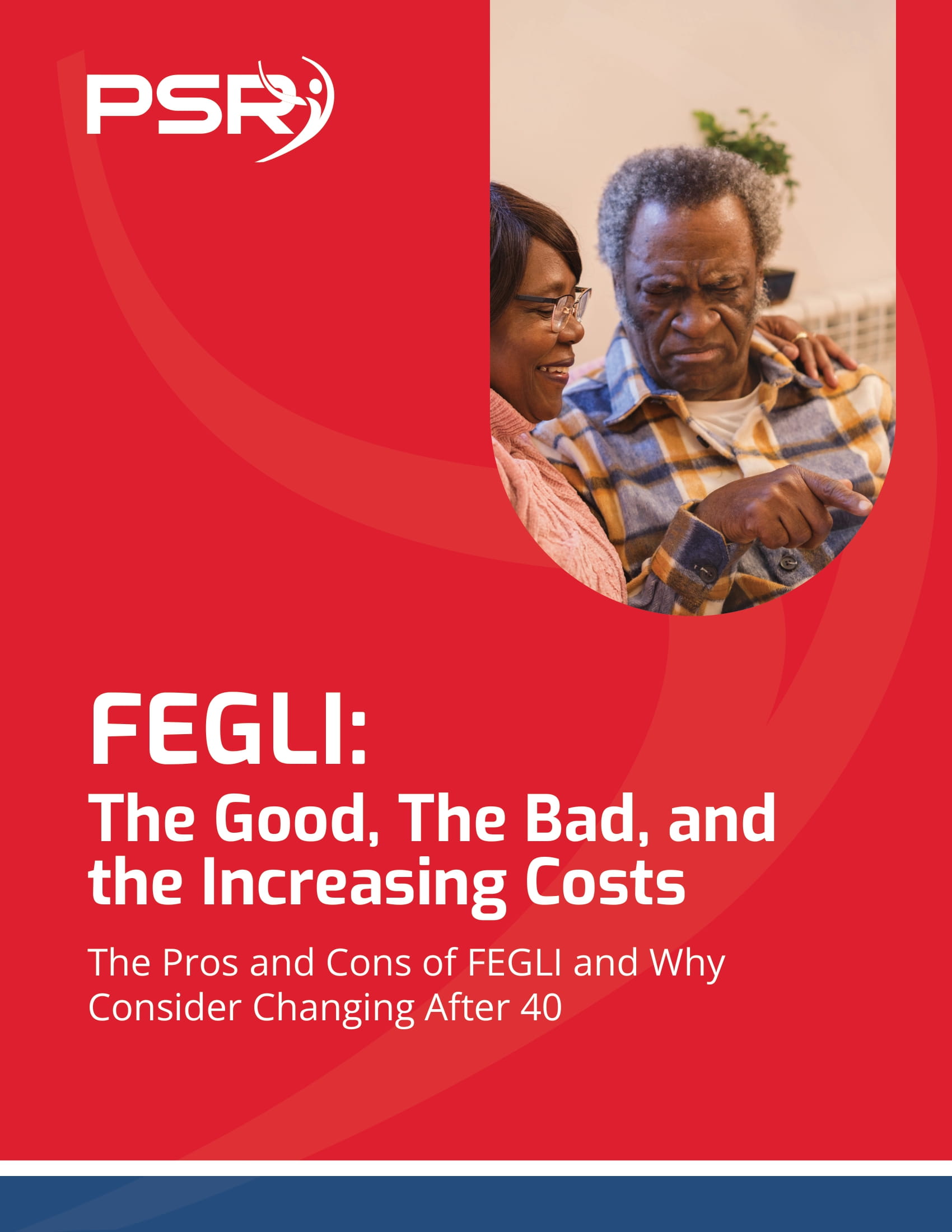Key Takeaways
-
Many FERS retirees in 2025 are realizing that their retirement income sources are not stretching as far as they anticipated, due to rising costs and structural shifts in benefits.
-
Proactively adjusting your retirement strategy and understanding the changing landscape of federal benefits can help you maintain financial stability throughout retirement.
The Financial Picture for FERS Retirees Has Shifted
When the Federal Employees Retirement System (FERS) was introduced in 1987, it was designed to offer a balanced three-part retirement package: a modest civil service pension
- Also Read: Federal Retirement Advice You Didn’t Know You Needed—Until Now
- Also Read: The Latest Federal Employee News You Need to Know to Protect Your Retirement
- Also Read: Ready for Retirement? Here’s How Law Enforcement Officers Can Leave the Job with Benefits Intact
However, retirees in 2025 are facing realities that differ from those expectations. Factors such as inflation, healthcare costs, market volatility, and benefit adjustments are creating new pressures on FERS retirees that must be addressed.
Rising Healthcare Costs Are Squeezing Budgets
Health expenses are often the largest financial surprise for retirees, and government retirees are not exempt.
-
FEHB premiums have continued to rise annually. In 2025, many plans have experienced double-digit percentage increases compared to 2024.
-
Out-of-pocket costs for deductibles, copayments, and coinsurance have also crept upward, straining fixed retirement incomes.
-
Prescription drug costs under Medicare Part D have a $2,000 cap now, which helps, but many plans still require careful management of medications to avoid surprises.
If you anticipated that healthcare expenses would remain relatively stable in retirement, you might now find that healthcare alone consumes a much larger share of your annuity and TSP withdrawals than originally projected.
Social Security Benefits Are Not Always Enough
While Social Security is a key piece of the FERS retirement equation, many retirees are learning that it does not go as far as expected.
-
In 2025, the average monthly Social Security retirement benefit is around $1,907.
-
Annual cost-of-living adjustments (COLAs) help, but the increases have not always matched actual living costs, especially for housing, healthcare, and everyday expenses.
-
Those who claimed benefits early have permanently reduced monthly payments, compounding financial stress in later years.
The idea that Social Security would “fill the gap” between the FERS pension and a comfortable lifestyle is proving unrealistic for many.
TSP Withdrawals Are Tricky to Manage
The Thrift Savings Plan (TSP) was intended to be the flexible “third leg” of your retirement income. Yet in practice, many retirees are discovering that:
-
Market volatility creates uncertainty, especially for those who heavily invested in stock-focused funds.
-
Required Minimum Distributions (RMDs) start at age 73 in 2025, forcing withdrawals even if you do not need the money immediately, and impacting taxes.
-
Withdrawal strategy errors (such as withdrawing too much too soon) are leading to faster depletion of savings.
A mismanaged TSP can undermine the entire retirement plan, leading to financial insecurity late in life.
Inflation Is Outpacing Retirement Income Growth
Inflation has returned as a major concern in the 2020s. Although COLAs and TSP returns provide some buffer, they often lag behind actual cost increases.
-
Between 2021 and 2024, inflation rates were significantly higher than the previous decade.
-
Many retirees who expected 2% annual inflation based their plans on outdated assumptions, only to see 4% or higher rates.
-
Everyday essentials like groceries, utilities, and insurance have risen dramatically compared to retirees’ fixed or slow-growing incomes.
Without an adaptive strategy, inflation can silently erode your purchasing power year after year.
Early Retirement Expectations Did Not Match Reality
FERS allows employees to retire early under provisions like MRA+10 (Minimum Retirement Age plus 10 years of service), but many who took early retirement have found themselves financially strained.
-
Early retirement means a permanent annuity reduction if you retired before reaching full eligibility.
-
Those retiring before 62 miss out on the FERS Special Retirement Supplement until Social Security eligibility kicks in.
-
A longer retirement period (25-30 years instead of 20) requires more resources to avoid running out of money.
In 2025, it is clear that retiring “as soon as possible” without a strong financial plan often leads to unexpected challenges.
The FERS Annuity Alone Was Never Meant to Fully Support Retirement
Your FERS Basic Benefit is calculated as a percentage of your “high-3” average salary, multiplied by years of service. But even after 30+ years of federal work, most retirees find:
-
The annuity replaces only about 30% to 40% of pre-retirement income.
-
Without careful supplementation through TSP and Social Security, a basic FERS pension alone does not provide a full retirement income.
-
Healthcare premiums and taxes are deducted directly from your annuity, reducing the net amount available.
Understanding this limitation is critical for managing your expectations and your long-term financial well-being.
Spousal Benefits and Survivor Planning Need Careful Attention
Many retirees assume that benefits automatically transfer to spouses or survivors, but:
-
You must elect a survivor benefit at retirement to continue FEHB and annuity payments to your spouse.
-
This election reduces your monthly annuity permanently, even if your spouse predeceases you.
-
Failing to plan for long-term survivor needs can leave loved ones without health insurance or financial support.
Solid survivor benefit planning is more important than many retirees realize until it is too late.
Tax Pressures Are Higher Than Anticipated
Tax obligations in retirement often come as a surprise, especially for public sector retirees who assumed lower post-retirement taxes.
-
FERS annuities are mostly taxable.
-
Social Security benefits can also become taxable depending on your overall income.
-
TSP withdrawals are taxed as ordinary income.
By 2025, many retirees are realizing that their effective tax rate in retirement is closer to their working years than they had assumed.
Longer Lifespans Require Bigger Nest Eggs
In 2025, life expectancy remains high:
-
Average life expectancy for a 65-year-old retiree is about 84 for men and 87 for women.
-
Many retirees will live well into their 90s.
Outliving your money is a real risk if retirement planning only accounts for 20 years instead of 30-35 years.
Changing FEHB and Medicare Integration Rules
Health benefits have changed with time:
-
In 2025, coordinating FEHB and Medicare properly is essential for minimizing healthcare costs.
-
Failure to enroll in Medicare Part B when required can lead to higher FEHB premiums or limited plan choices.
-
Many FEHB plans integrate with Medicare to lower your out-of-pocket costs, but retirees must actively manage enrollment to take full advantage.
Assuming that FEHB “just continues” without needing Medicare coordination can leave you exposed to higher costs.
Strategies to Navigate the New Retirement Landscape
Facing these financial challenges requires a proactive and informed approach. Here are key strategies to consider:
-
Reassess your spending: Create a retirement budget based on actual expenses, not estimates.
-
Review your TSP allocation: Adjust your investments to balance growth and stability, considering your withdrawal needs.
-
Plan for taxes: Work with a tax professional to minimize your taxable income in retirement.
-
Maximize healthcare planning: Coordinate FEHB and Medicare enrollment strategically.
-
Update your survivor plans: Ensure your spouse is protected financially and with healthcare access.
-
Account for inflation: Build in higher annual cost projections to your retirement forecasts.
Being flexible and willing to update your retirement plan as realities shift is the best protection against financial instability.
Staying Ahead of Retirement Challenges
The financial landscape for FERS retirees in 2025 is not what many expected when they started planning. Rising healthcare costs, tax surprises, inflation, longer retirements, and shifting benefit rules require active management and periodic reassessment.
It is critical to stay informed, update your financial projections, and seek help when needed. If you are unsure how these factors impact your specific retirement, it is highly advisable to get in touch with a licensed professional listed on this website to review your situation and secure your financial future.













